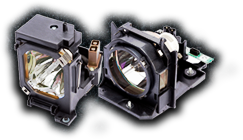Has the zombie movie craze reached its peak? Think about it: Until the early 2000s, zombie flicks were specialty movies, a small horror sub-genre hidden in the back corner of Blockbuster.
Now, they’re everywhere. This isn’t a sub-genre anymore, and there’s plenty of evidence that we’re reaching a zombie-movie fever pitch. The latest season premiere of The Walking Dead drew in more than 10 million viewers, and Barnes and Noble recently called the last decade “the golden age of zombie fiction.”
How did we get here? What was the zombie movie that set the trend in motion? There’s one that many cite: Danny Boyle’s “28 Days Later.” Now nearly a decade later, Boyle’s end-of-days thriller serves as one of the best examples in this now-gigantic genre.
We know how the story starts. An extremely contagious, rapidly-spreading virus escapes from the lab and devastates the general population. Panic ensues. Society as we know it is forever lost. And that’s how 28 Days Later begins. In the movie, the virus is different; it’s called Rage and causes humans to act violently and eat people. Panic ensures. Society is forever lost.
You get the idea.
That’s the world Jim – played by a then-unknown Cillian Murphy – wakes up to 28 days after the outbreak. (Murphy’s career took off after this movie; you might know him as “Scarecrow” from the Batman trilogy.) Jim soon discovers that England is abandoned and only inhabited by night-walking, Rage-infected humans. He begins wandering an eerily silent, abandoned London. These early scenes alone capture the gloom, doom and isolation beautifully.
Eventually, Jim teams up with Selena (Naomie Harris) and a father and daughter team played by Christopher Ecceleston and Megan Burns. And they make a break from zombie-infested London to Manchester, where they hoping to find a survivors’ camp. They have to fight off the attacks, they don’t know who to trust, they’re scared, etc.
You get the idea.
What makes 28 Days Later work so well is that it subverts the genre it helped catapult into mega-popularity. The story flows rapidly, albeit with a few tried-and-true clichés. It’s an edge-of-your-seat thriller, but the drama still works and you care if the characters make it out of end of the world alive. And the cinematography is effective and captivating, especially when I watched it on my Panasonic PT-DW6300 projector. It captivates you and keeps you guessing.
Today, that plot might sound familiar. We’ve seen zombies and post-apocalyptic thrillers done in so many ways now – from special-effects spectacles like World War Z to laugh-out-loud spoofs like ZombieLand. 28 Days Later reminds us how little the genre has changed in the last decade. It starts with a virus, and destruction, and the end of humanity. You get the idea. But still, when done right, it’s fun to watch.


